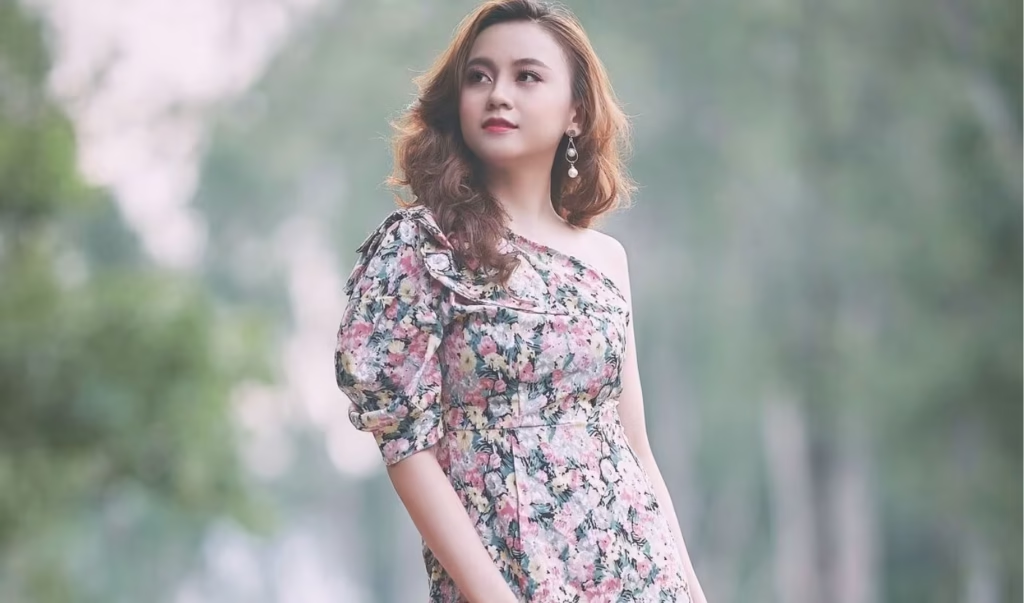Asian style clothing encompasses a rich and diverse array of traditional and modern garments, reflecting the cultural and historical contexts of various Asian countries. These garments not only serve practical purposes but also embody centuries of artistic expression, social hierarchies, and cultural values. The intricate details, symbolic colors, and distinctive silhouettes of Asian clothing represent the unique identity of each region while contributing to the global fashion landscape.
Here’s an overview of some prominent styles:
Traditional Asian Garments
Kimono (Japan)

A T-shaped, full-length garment typically made from high-quality silk, often worn with an Obi belt. Kimonos are symbolic and are worn during special occasions like weddings and tea ceremonies. Each element of a kimono carries meaning, from the fabric pattern to the color choice. For instance, vibrant colors are worn by unmarried women, while subdued tones are preferred by married women. The art of wearing a kimono (kitsuke) requires significant skill, as proper draping and folding are essential to achieve the elegant silhouette that has captivated the world for centuries.
Hanbok (South Korea)

Originating from ancient royalty, Hanbok is a loose-fitting outfit. For men, it includes a vest, jacket, and pants, while for women, it consists of a jacket, undershirt, skirt, and pants. Hanbok is worn during special occasions and is experiencing a resurgence in popularity. The voluminous skirts (chima) and cropped jackets (jeogori) create a distinctive silhouette that emphasizes grace and movement. Traditional Hanbok features vibrant colors and natural dye techniques that reflect Korea’s appreciation for harmony with nature, while contemporary designers are reimagining these elements for modern wardrobes.
Ao Dai (Vietnam)

A long, one-piece garment with long sleeves and side slits, worn over trousers. It is more commonly worn by women and is a symbol of Vietnamese culture, often worn during important events like weddings and Tết. The form-fitting top flows gracefully over loose-fitting pants, creating an elegant silhouette that honors tradition while remaining practical. Throughout Vietnamese history, the Ao Dai has evolved with societal changes, reflecting French colonial influences in the early 20th century and continuing to adapt with modern fashion trends while maintaining its cultural significance.
Sari (South Asia)

A long piece of fabric draped around the body, typically worn with a blouse and underskirt. It is a staple in many South Asian countries, including India and Bangladesh. The versatility of the sari is remarkable – a single unstitched fabric (typically 5-9 meters in length) can be draped in over 100 regional variations. Each draping style reflects geographic, occupational, and cultural distinctions. The fabrics range from everyday cotton to luxurious silk with intricate zari (metallic threadwork), while patterns and motifs often tell stories of religious symbolism or regional artistic traditions.
Hanfu (China)

An ancient Chinese garment that includes various styles like jackets with skirts or trousers. It is adorned with ornaments that signify social status. Dating back over 3,000 years, Hanfu embodies traditional Confucian values through its modest coverage and flowing lines. The cross-collar design, wide sleeves, and sash at the waist are distinctive features that have influenced garments throughout East Asia. A recent revival movement has sparked renewed interest in Hanfu among young Chinese people seeking to reconnect with their cultural heritage.
Cheongsam (China)

Also known as Qipao, this is a fitted, body-hugging dress that was popularized in the early 20th century. It is a symbol of Chinese elegance and sophistication. The distinctive mandarin collar, side slits, and form-fitting silhouette represent a fusion of traditional Chinese aesthetics with Western tailoring techniques. Originally a loose garment worn by Manchu women during the Qing dynasty, the modern Cheongsam evolved dramatically in 1920s Shanghai, becoming an emblem of Chinese modernity and feminine empowerment that continues to inspire contemporary fashion designers worldwide.
Modern Asian Fashion Trends
Lolita Fashion (Japan)

Known for its elaborate and feminine style, Lolita fashion includes full skirts, frilly tops, and lace accessories. It is a popular aesthetic among young Japanese women. This subculture emerged in the 1980s as a rebellion against revealing fashion, instead embracing modesty with Victorian and Rococo influences. The intricate coordination of petticoats, bloomers, headpieces, and accessories creates a doll-like appearance that challenges conventional beauty standards while celebrating craftsmanship and attention to detail.
Ganguro and Gyaru (Japan)

These styles are characterized by bright colors, bleached hair, and bold makeup. They were popular in the 1990s and early 2000s among Japanese youth. Ganguro (literally “black face”) featured deeply tanned skin, contrasting white eyeshadow, and platinum blonde hair—a deliberate inversion of traditional Japanese beauty ideals that prize pale skin. Gyaru (from “gal”) encompassed various sub-styles ranging from the sophisticated Bijin Gyaru to the extreme Yamanba look. These rebellious fashion movements represented Japanese youth culture’s response to social pressures and economic stagnation.
Asian Chic

A global trend that incorporates elements of Asian culture into Western fashion. It has been both celebrated for its creativity and criticized for cultural appropriation. When respectfully executed, this fusion can highlight the artistic merit of traditional Asian designs while creating innovative contemporary styles. Mandarin collars, kimono-inspired silhouettes, and obi-style belts frequently appear in international fashion collections, reflecting the growing appreciation for Asian aesthetics in global fashion circles.
Casual Asian Style

In many Asian countries, casual style often incorporates vibrant colors and accessories. For example, in Tokyo, outfits often feature an accent color or item to add flair to otherwise minimalist attire. The street fashion scenes in Seoul, Tokyo, and Shanghai have become influential globally, with distinctive approaches to layering, proportions, and mixing high-end brands with affordable pieces. Technology-integrated fashion is also emerging, reflecting Asia’s leadership in technological innovation alongside its fashion creativity.
Image Designed by Freepik

Find The Perfect Look!
Discover Stylish, Quality Clothing That Elevates Your Everyday Style





